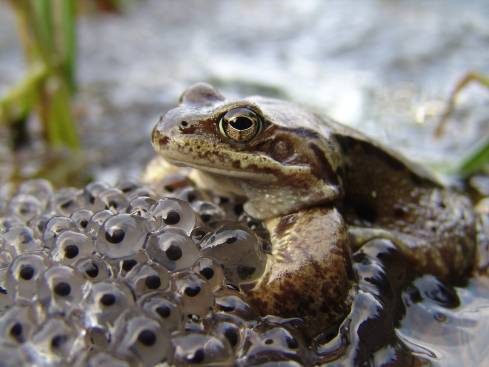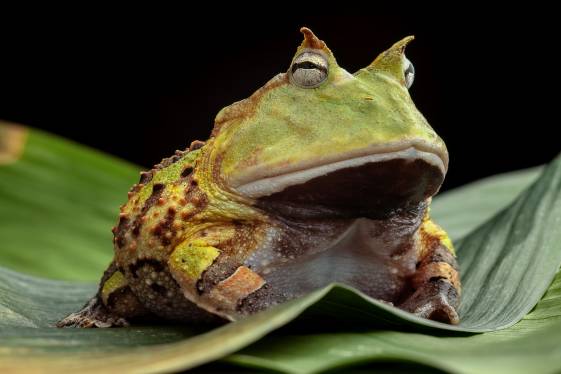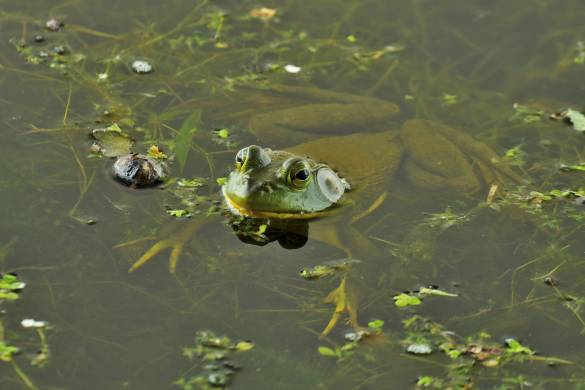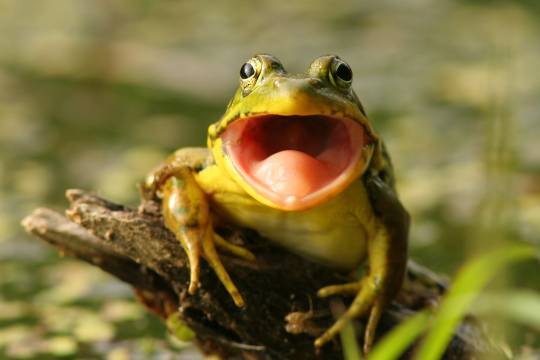Connect with a verified veterinarian in minutes. Licensed vets are available 24/7 to answer your questions. No need to worry about your furry family member.
If you’re the pet parent of a frog, then you may be wondering if she’s pregnant or even how to tell. We’re glad you’re here—you’re in the right place!
In this article, we’ll take a look at how to tell if a frog is pregnant, or even if a frog can be pregnant, and more! Let’s get started!
Can a Female Frog Be Pregnant?
That’s a great question! The answer may surprise you, though. Frogs don’t really become pregnant in the same way humans and other animals do. Instead, the female will lay eggs, which are then fertilized by a male frog. From these eggs, frog larvae will develop into tadpoles and then frogs.
All of this happens outside of the female frog’s body rather than internally.
So, how can a frog be pregnant? Well, in the spring, a female frog can develop eggs inside her body. This is how she can be pregnant.
How Can You Tell if a Frog is Pregnant?
Remember, we’re talking about the internal development of eggs inside the female frog. She’s not carrying young in her body like other animals. However, when the female frog is developing eggs inside, she may be chubbier around her tummy.
Female frogs may develop a “pear” shape when pregnant, which happens just before spawning. For those who are inexperienced with frogs, it may be difficult to tell if she’s pregnant or is just eating well.

Review symptoms, medications & behavior to keep your pets healthy with a Vet Online in just minutes.
Ask a Vet Live NowWhen Do Frogs Spawn?
Frogs typically spawn in the spring, between January and March. This is when you may notice frog eggs along with the shallow areas of ponds and lakes, or in shady spots, large puddles, and more.
How are the Eggs Fertilized?
Frogs usually start to breed when they’re about two or three years old. They usually return to the pond/lake where they were born, where the males try to attract females to mate with. Male frogs may use a special call to let the frog ladies know they’re available!
Female frogs will only respond to the males’ calls when they’re ready to breed. This means they are already carrying eggs that are ready to be fertilized. What’s more, some female frogs are very fussy about the males they choose. Some females may wait as long as several nights before finding the right male to mate with.
Once the male has attracted a female frog, he then climbs on the back of the female. He grabs her under the forelegs and hangs on. He will stay on her back as the female lays her eggs.
When the female lays her eggs, the male then fertilizes the eggs by spraying them with semen. One interesting note is that it’s possible for more than one male frog to fertilize the eggs of a female! So, the resulting tadpoles may have the same mother but more than one father.
How to Tell the Difference Between a Male & Female Frog
This can be difficult, but there are some things that help you tell whether the frog is a girl or a boy. You may be able to tell by the frog’s call. The male frog is the one that croaks. This is the call they use to attract female frogs for breeding. The female chooses the frog that has the manliest call.
Females are usually larger than males in most frog species. This is because they’re the ones that develop and carry the eggs. The larger the female, the more eggs she can carry! Plus, it’s easier if the female frog is larger. If the male was larger, he might be too large for the female. He might accidentally hurt the female as they mated.
Frogs also have genitalia, which can distinguish between males and females. However, this isn’t a very good way of determining whether the frog is female or male. That’s because the genitalia is carried inside the frog’s body.
Are There Frogs That Internalize Fertilization?
Yes! There are some species of frogs that use internal fertilization rather than external. One species is the Tailed Frog (Ascaphus), found in western North America. For this species, all eggs are fertilized inside the female before they’re released into the water.
Other Special Frog Mating Practices
There are some other methods that some species of frogs need to use when mating. There’s an Asian tree frog (Polypedates) that must wait until the rainy season comes. As soon as the rains arrive, the frogs must mate right away in order to make sure the tadpoles have enough time to form in the puddles used to lay the eggs.
Then there are African frogs that build a foam nest for their eggs. These frogs usually live out of water most of the time, which is why they create foam nests. This is a type of tree frog. The female builds her nest out of foamy froth. During this process, she may need to enter some nearby water to rehydrate, but then she goes back to building her foamy nest. She builds the nest overhanging the water source. Once the eggs are laid, they’re fertilized by a male.
When the mating for this African tree frog is finished, the foamy nest dries and hardens. It becomes something like meringue. The hard crust protects the eggs inside and keeps them moist. When the tadpoles inside the nest are about 4-6 days old, the nest begins to dissolve, releasing the tadpoles into the water. How cool is that?
How Many Eggs Can a Frog Lay?
Depending on the species, a female frog may lay up to 20,000 eggs at the same time! While you’d think that would result in thousands of frogs, that’s just not the case. The reality is that frogs must lay so many eggs because they’re prey for other animals.
Another reason for laying so many eggs is that not all the eggs will be viable. This may be due to genetic problems with the eggs and more.
In addition, some of the eggs may not survive if the environment changes. For instance, if the eggs were laid in a rain puddle, and the puddle dries up, the eggs will perish. This can also be the case if the eggs are laid in a pond or lake, and the water level becomes too low to protect the eggs.
As you can see, frogs don’t have it too easy when it comes to reproducing! And it’s not always easy to tell if a female is “pregnant” or not. If you’re a pet parent of frogs and believe the female is expecting, then you might take her to the vet for a checkup. The vet will be able to tell you whether or not your frog is going to lay eggs! What a surprise if the vet says yes, the frog is going to have baby frogs!
Connect with a verified veterinarian in minutes. Licensed vets are available 24/7 to answer your questions. No need to worry about your furry family member.

Kyoko
Kyoko is from a family of 3 and moved to New York with her parents and siblings when she was 13. Kyoko is fond of spending a great amount of time with pets, specifically her beagle Luna and cat Missy. Her boyfriend often complains that she spends too much time giving attention to their animals. Kyoko has written dozens of articles concerning pets and is aiming at owning a pet shop one day!
Review symptoms, medications & behavior to keep your pets healthy with a Vet Online in just minutes.
Ask a Vet Live Now




